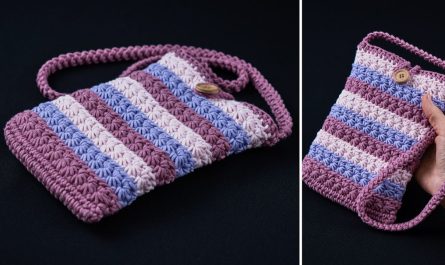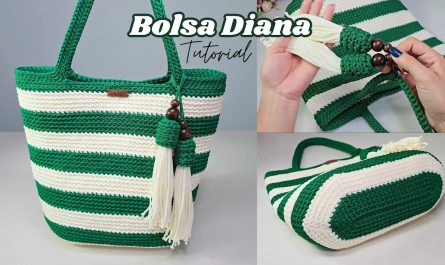Let’s create a charming and unique crochet tote bag with a snail-shaped stitch pattern! This project is all about adding a whimsical, textured touch to a practical everyday item. The “snail-shaped stitch” likely refers to a stitch pattern that creates a spiral or coiled effect, giving the bag a playful, organic feel.
How to Crochet a Snail-Shaped Stitch Tote Bag: A Detailed Step-by-Step Tutorial
This comprehensive guide will walk you through crocheting a sturdy and stylish tote bag, focusing on a stitch pattern that creates a delightful snail-like or spiral texture. We’ll cover everything from the bag’s construction to its handles and finishing touches.
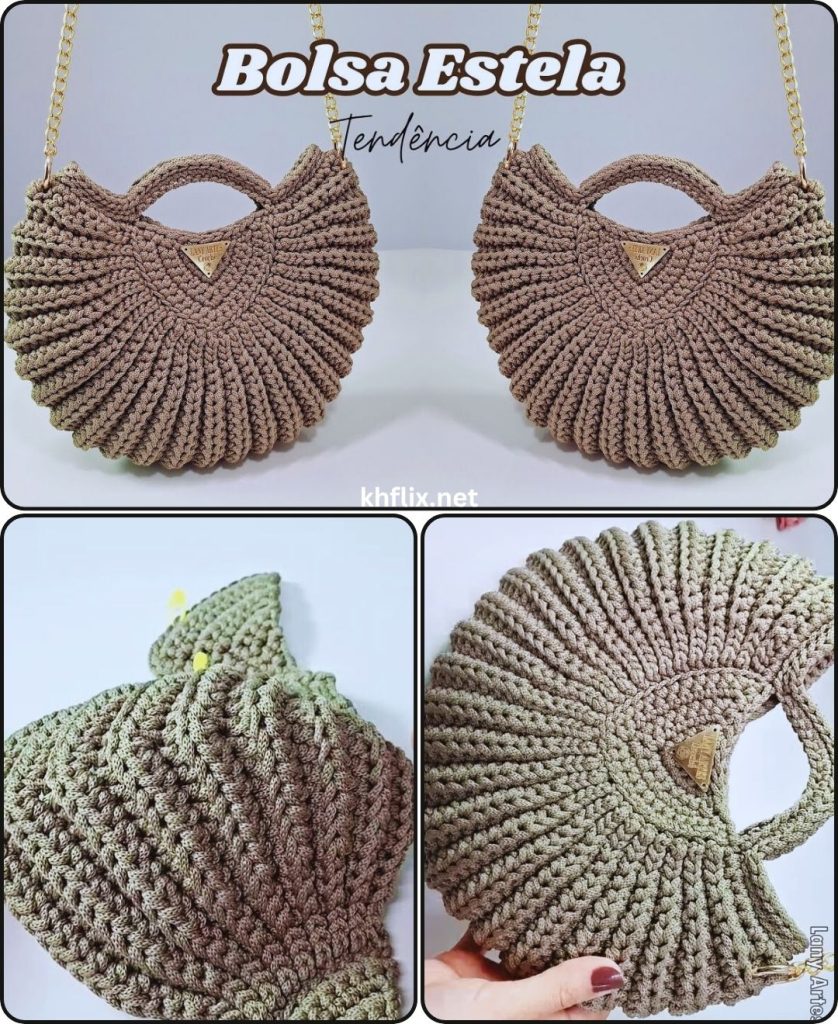
Skill Level: Intermediate
This project assumes you’re comfortable with:
- Chain (ch): The basic foundation.
- Slip Stitch (sl st): For joining rounds and neatening.
- Single Crochet (sc): A dense, sturdy stitch, great for bag bases and stability.
- Half Double Crochet (hdc): A slightly taller stitch that builds fabric quickly.
- Double Crochet (dc): A common stitch for height and texture.
- Working in rounds: Both continuous and joined rounds.
- Increasing and Decreasing: Essential for shaping the bag.
- Working into specific loops (BLO/FLO): For creating ridges and texture.
- Understanding stitch repeats: Key to creating the snail pattern.
- Weaving in ends securely.
What is a “Snail-Shaped Stitch”?
Since “snail-shaped stitch” isn’t a standard crochet term, we’ll interpret it as a spiral or coiled texture achieved through specific stitch placement and height variations. This can be done by:
- Working a sequence of increasing stitch heights (e.g., sc, hdc, dc, tr) within a single stitch or group, creating a raised, curled segment.
- Working stitches into front or back loops only to create pronounced ridges that spiral.
- Using post stitches (front post/back post) to create a raised, cord-like texture that could be arranged in a spiral.
For this tutorial, we’ll implement a common and effective method for creating a spiral/snail-like texture: working a cluster of stitches into the same stitch or space, often with increases, and varying heights to make it curl. This will be interspersed with a background stitch to make the “snail” pop. We’ll use a stitch combination of single crochet and double crochet to achieve this, making it manageable for an intermediate crocheter.
Finished Bag Dimensions (Approximate):
This pattern creates a versatile, medium-sized tote bag, typically around 12-14 inches (30-35 cm) wide and 10-12 inches (25-30 cm) tall (excluding handles). You can easily adjust the size by modifying your starting chain and the number of rounds for the bag body.
Materials You’ll Need:
- Yarn: Approximately 400-600 yards (365-550 meters) of Worsted Weight (Medium #4) Cotton or Cotton Blend Yarn.
- Why Cotton? Cotton yarn is ideal for bags due to its durability, minimal stretch (which helps the bag maintain its shape), and excellent stitch definition, which is crucial for the textured snail stitch.
- Color Choice:
- Main Bag Color (MC): This will be the primary color for your bag, including the base and background for the snail stitch.
- Snail Accent Color (SAC) (Optional): A contrasting or complementary color to make the snail texture stand out. Using a different color for the “snail” parts will make the effect much more pronounced. If you prefer a more subtle, monochrome look, you can use the Main Bag Color throughout.
- Crochet Hook: Size H/5.0mm or I/5.5mm. A 5.0mm hook generally creates a denser fabric, which is ideal for a sturdy bag. If your tension is very tight, you might prefer a 5.5mm.
- Yarn Needle (Tapestry Needle): Essential for seamlessly weaving in all your loose yarn tails.
- Scissors: For cutting your yarn.
- Stitch Markers (Optional but Highly Recommended): These are incredibly helpful for marking the beginning of your rounds and specific points for the snail stitch.
- Bag Handles (Optional): You can crochet your own sturdy handles (instructions below) or purchase pre-made ones (like leather, bamboo, or sturdy metal rings) for a professional finish.
Understanding the Bag Construction:
We’ll build this handbag in a seamless, continuous manner for maximum durability and a clean finish. The process involves three main stages:
- Creating an Oval Base: This foundation gives your bag stability and shape.
- Building the Body with the Snail Stitch: Working upwards in rounds to form the main structure, incorporating the textured pattern.
- Crocheting and Attaching Handles: Adding the carrying straps and putting all the final touches.
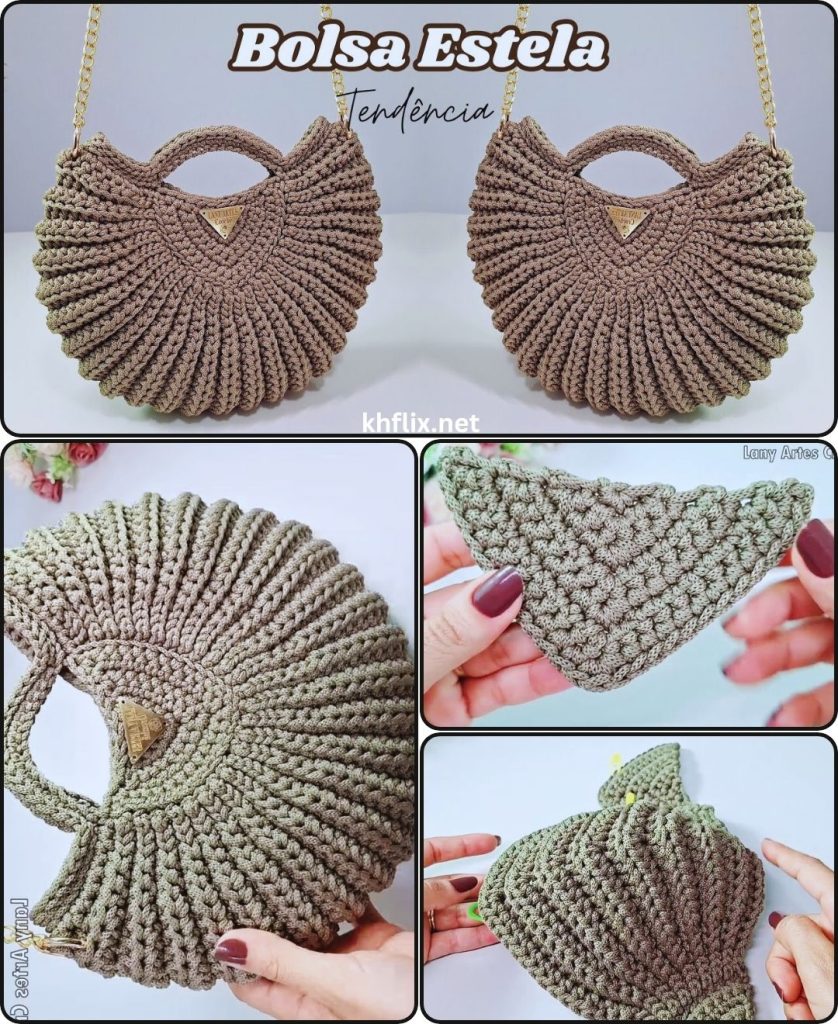
Let’s Crochet Your Snail-Shaped Tote Bag!
Part 1: Crocheting the Oval Base (Main Bag Color – MC)
A solid, flat base is crucial for your tote bag to sit upright and hold its contents without sagging. We’ll use single crochet (sc) for a dense and sturdy foundation.
- Starting Chain:
- With Main Bag Color (MC), make a slip knot and place it on your hook.
- Chain (ch) 31. (This chain forms the initial length of your bag’s base. If you want a wider bag, chain more stitches; for a narrower one, chain fewer. Keep the number odd for easier symmetry in later rounds.)
- Round 1:
- Work 2 single crochet (sc) stitches into the 2nd chain from your hook.
- Work 1 sc into each of the next 28 chains across.
- Work 3 sc into the very last chain. (This forms the smooth, curved end of your oval, allowing you to turn your work around the corner.)
- Now, working down the opposite side of the foundation chain (into the bottom loops of the chains you just worked into): Work 1 sc into each of the next 28 chains across.
- Work 1 sc into the very first chain (the same chain where you placed the initial 2 sc).
- Slip stitch (sl st) into the first sc of the round to join.
- [Total: 62 sc] (This completes your first oval base round.)
- Round 2:
- Ch 1 (this chain does NOT count as a stitch, it just gives height).
- Work 2 sc into the first stitch (your first increase on the curve).
- Work 1 sc into the next 29 stitches.
- Work 2 sc into each of the next 3 stitches (increases evenly spaced around the curve).
- Work 1 sc into the next 29 stitches.
- Work 2 sc into each of the last 2 stitches (increases around the final curve).
- Sl st into the first sc to join.
- [Total: 68 sc]
- Round 3:
- Ch 1.
- Work 2 sc into the first stitch.
- Work 1 sc into the next 30 stitches.
- Work 2 sc into each of the next 3 stitches.
- Work 1 sc into the next 30 stitches.
- Work 2 sc into each of the last 2 stitches.
- Sl st into the first sc to join.
- [Total: 74 sc]
- Round 4 (Optional for a larger base):
- Ch 1.
- Work 2 sc into the first stitch.
- Work 1 sc into the next 31 stitches.
- Work 2 sc into each of the next 3 stitches.
- Work 1 sc into the next 31 stitches.
- Work 2 sc into each of the last 2 stitches.
- Sl st into the first sc to join.
- [Total: 80 sc]
- Important Base Check: At this point, your base should be a flat oval that lies nicely without curling up or ruffling excessively. If it curls, you need more increases. If it ruffles, you’ve likely increased too much in a previous round. Adjust accordingly.
- Do not fasten off MC yet.
Part 2: Building the Bag Body with the Snail-Shaped Stitch
Now we’ll transition from the flat base to build the upright sides, incorporating our unique texture. We’ll interpret the “snail-shaped stitch” as a coiled shell-like texture created by varying stitch heights within a small cluster.
- Transition to Body (Establishing Verticality – MC):
- Ch 1 (does NOT count as a stitch).
- Work 1 sc in the Back Loop Only (BLO) of each stitch around. (This creates a sharp ridge where the base turns up into the sides of the bag, providing a clean edge).
- Sl st into the first sc to join.
- [Total: 80 sc] (Your stitch count remains the same as your final base round).
- Snail Stitch Setup Round (MC):
- Ch 1.
- Work 1 sc into each stitch around (working through both loops normally). This round creates a stable background for your snail shells.
- Sl st into the first sc to join.
- Fasten off MC, leaving a short tail for weaving.
- Snail Shell Round (Snail Accent Color – SAC, or MC if monochrome):
- Join Snail Accent Color (SAC) with a sl st into any stitch.
- Ch 1.
- *Skip 1 stitch. In the next stitch, work the Snail Shell Cluster:
- (1 sc, 1 hdc, 1 dc, 1 hdc, 1 sc) all into the same stitch.
- Skip 1 stitch. Work 1 sl st into the next stitch.*
- Repeat from * to * around the entire bag body. You’re creating little raised “shells” that will curl.
- Sl st into the initial sl st of the round to join.
- Fasten off SAC, leaving a short tail.
- Connecting Round (MC):
- Join Main Bag Color (MC) with a sl st into any sc stitch that formed part of a Snail Shell Cluster (e.g., the first sc or the last sc of a previous cluster).
- Ch 1.
- Work 1 sc into each sc, hdc, and dc stitch of the previous Snail Shell Clusters. Be careful to catch all the stitches and avoid large gaps. You should aim to have a fairly consistent number of sc stitches in this round (approx. 80 sc, though it might vary slightly depending on how tight your shells pulled).
- Sl st into the first sc to join.
- Do not fasten off MC.
- Repeat Pattern for Bag Body Height:
- You will now alternate between the Snail Shell Round (in SAC) and the Connecting Round (in MC) until your bag reaches the desired height (e.g., 10-12 inches / 25-30 cm).
- Always start a new Snail Shell Round (SAC) by joining into an sc stitch of the previous MC Connecting Round.
- Always start a new Connecting Round (MC) by joining into an sc stitch that was part of a Snail Shell Cluster.
- This repetition will create the continuous, beautiful snail shell texture up the sides of your bag. Ensure your tension is consistent.
- Finishing the Top Edge:
- After completing your final Snail Shell Round, join Main Bag Color (MC).
- Ch 1.
- Work 1 sc in each sc, hdc, and dc stitch of the previous Snail Shell Clusters (as in the Connecting Round).
- Sl st into the first sc to join.
- Repeat this sc round for 2-3 more times. This creates a very tight, dense, and firm top border for your bag. This firmness is key to preventing the top of your bag from stretching out over time and provides a solid base for securely attaching your handles.
- Fasten off, leaving a 6-inch (15 cm) tail for weaving in.
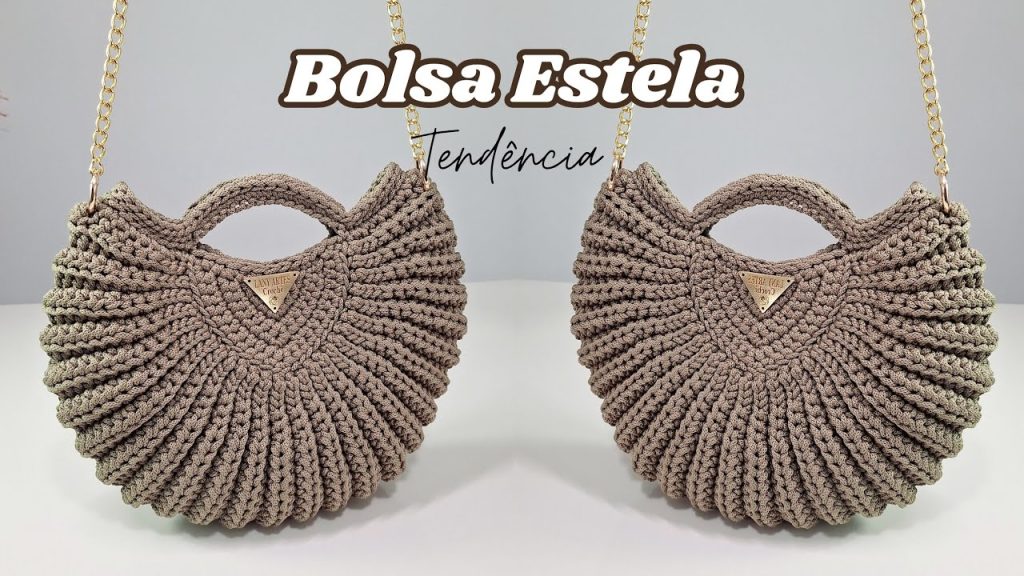
Part 3: Crocheting and Attaching Handles
You can either crochet sturdy handles or use pre-made ones. Crocheted handles ensure a fully handmade look.
- Crocheting the Handles (Make 2 – MC):
- With Main Bag Color (MC), Ch 8. (This will be the width of your handle. Adjust for wider or narrower handles.)
- Work 1 sc into the 2nd chain from your hook and in each chain across. (You should now have 7 sc).
- Ch 1, turn (this is your turning chain for the next row).
- Work 1 sc into each of the 7 sc across.
- Repeat the last step (Ch 1, turn, sc across) until your strap reaches the desired length. For a comfortable tote, aim for approximately 18-24 inches (45-60 cm).
- Fasten off, leaving a very long tail (at least 12-18 inches / 30-45 cm) on each end of the handle for sewing.
- Attaching the Handles:
- Lay your completed bag flat and gently flatten it out so the side “creases” are even. This helps ensure your handles are symmetrically placed.
- Position your first handle. On one side of the bag, measure in approximately 3-4 inches (7.5-10 cm) from each flattened side crease along the top edge. These points mark where you’ll attach the handle. You can use stitch markers to temporarily mark these spots.
- Thread one of the long tails of the handle onto your yarn needle.
- Align one end of the handle with one of your marked spots on the inside of the bag’s top border.
- Using your yarn needle, firmly sew the handle end to the bag’s top border. Pass your needle through multiple layers of the bag’s sturdy sc stitches. Make several passes and criss-cross stitches to ensure the handle is incredibly secure and can withstand the weight of bag contents.
- Repeat for the other end of the first handle, attaching it to the second marked spot on the same side of the bag.
- Repeat the entire process for the second handle on the opposite side of the bag, taking care to ensure it is positioned symmetrically to the first.
- Option: Purchased Handles: If you opt for pre-made handles (e.g., wooden, metal, or leather), follow their specific attachment instructions. Usually, they involve sewing them securely to the top border of your bag with strong thread.
Part 4: Finishing Touches
- Weave in ALL Remaining Ends: This is often the least favorite part of crocheting, but it’s absolutely critical for a clean, neat, and durable bag. Use your yarn needle to meticulously weave in all remaining tails from your bag body, base, and color changes.
- How to Weave Neatly: Weave the tails into the stitches of the same color as the tail. Weave in one direction for about 1.5-2 inches (4-5 cm), then subtly change direction and weave back through some of the same stitches. This “locks” the tail in place and prevents it from unraveling. Be patient and thorough; well-woven ends are practically invisible and significantly contribute to your bag’s longevity and appearance.
- Blocking (Optional but Very Helpful): Blocking is a process that sets your stitches, evens out tension, and helps your bag take on its intended shape. It can make a huge difference in the final look and how well the snail texture pops.
- Gently stuff your bag with towels or crumpled paper to fill it to its desired shape. Ensure it’s plump and even.
- Using a spray bottle, lightly mist the entire bag evenly with water (especially if using cotton yarn).
- Gently shape the bag with your hands while it’s damp, ensuring the base is flat, the sides are even, and the snail shells are well-defined.
- Allow the bag to air dry completely and thoroughly before removing the stuffing. This can take 24-48 hours.
- Add a Fabric Lining (Highly Recommended for Durability & Functionality): While optional, a fabric lining dramatically improves the functionality and longevity of any crochet bag. It provides significant structure, prevents the bag from stretching out, helps it hold its shape even when filled, and, crucially, ensures small items (like keys, pens, or coins) don’t slip through any tiny gaps in your crochet stitches.
- Measure: Carefully measure the finished dimensions of your crochet bag: its height, its width, and the length/width of its oval base.
- Cut Fabric: Cut fabric pieces to match the inside dimensions of your bag. You’ll typically need a main body piece (a large rectangle that will wrap around the inside) and a separate oval piece for the bottom, mirroring your crocheted base. Remember to add a generous seam allowance (e.g., 1/2 inch or 1.2 cm) to all edges of your fabric pieces.
- Sew Fabric Lining (using a sewing machine is easiest): Stitch the fabric pieces together (right sides facing each other) to create a fabric “bag” that will fit snugly inside your crochet bag. Press all seams open for a neat finish. Create a neat hem around the top edge of the fabric lining.
- Insert and Secure: Carefully place the completed fabric lining inside your crochet bag. Align the top edges of both the crochet bag and the lining. Fold the hemmed top edge of the lining over the top edge of the crochet bag slightly (if needed) to create a clean finish. Then, using matching thread and a hand-sewing needle, hand-stitch the lining securely to the inside top edge of the crochet bag. Stitch carefully so the stitches are not visible from the outside of your beautiful bag.
Congratulations! You’ve now completed a truly unique and charming crochet tote bag with a snail-shaped stitch pattern! This handmade accessory is a wonderful way to express your creativity and will surely stand out. Enjoy carrying your one-of-a-kind creation!


